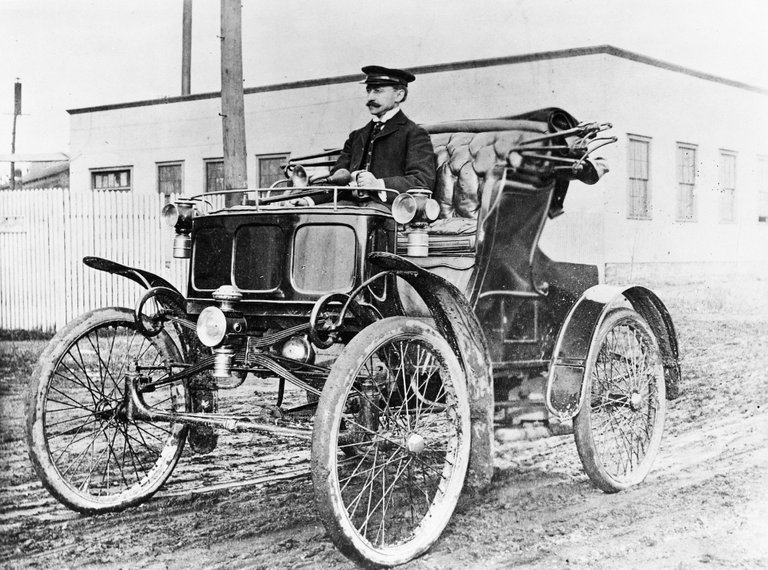History of automobiles
Today's automobiles are very modern and efficient. The development of automobiles has been achieved through the ages. The wheel was the most groundbreaking invention of human civilization. The invention of the wheel has gradually brought the modern of the automobile era. After the invention of the wheel, human learned to use horse carts, bullock carts, etc.

source
Leonardo da Vinci first introduced the concept of the automobile in the fifteenth century. Thanks to Leonardo da Vinci for the amazing ideas. His thoughts have changed the world.
In 1680,Sir Isaac Newton described driving cart with steam jet. Then Christian Huyghens surprised the whole world by running an engine with a cylinder. He ran the engine with gunpowder. This was probably the world's first engine powered vehicle.
In 1769, Nicolas Cagnot invented a three-wheeled car powered by a steam engine. This car was very slow. And could be run in a very short time. It only lasted 15 minutes. Its speed was four kilometers per hour. He invented the car and is known as the father of automobiles in the world of automobiles.And then the first steam-powered automobile engine with a crankshaft was built in 1802 by Richard Trevithick.
In 1863, Lenoir of France invented the steam-powered motor vehicle . This car had a steam engine with one cylinder. The automobile ran only 10 kilometers. This motor vehicle was much more advanced than the motor vehicle of Nicolaan Cognot. The development of automobiles was gradually increasing
In 1867 Nicholas A Atto invented the auto 4-stroke petrol engine. This groundbreaking discovery accelerated the development of automobiles. It was an invention that is extremely modern. We nowadays use four stroke feature petrol engines. Nicholas A. Auto connects this 4-stroke petrol engine to the automobile. Germany The contribution of this scientist is very important in the history of automobiles. That is why German is called the birthplace of automobiles. The matter is quite nice.
In 1885, Gottlieb Daimler invented the high-speed combustion engine. He attached the engine to a two-wheeled car. In the same year, another scientist attached a three-wheeled vehicle to a speed of 8 kilometers per hour. The speed of this car was quite good. In 1889, Daimler built a four-wheeled motor vehicle.
In 1895, Panhard invented the modern motor vehicle with steep engine. There were many modern conveniences in this motor vehicle. It had a power transmission system. Power transmission system is an important part of modern motor vehicle. This motor vehicle had brake system, class, engine etc.
In 1893, Charles Duryea and Frank Duryea, two brothers from the United States, built a petrol-powered motor vehicle.
During World War I, the body of a motor vehicle was made of wood. Then slowly the body of the motor vehicle started to be made with metal. Gradually the design of motor vehicles became more modern. The design of motor vehicles 50 years ago and the design of motor vehicles of today is completely different. Due to the gradual development of motor vehicles, we can use the brightest motor vehicles of the present age. We would not be able to use the motor vehicle of the present age without the contribution of all those important scientists in history. Hundreds of scientists and thousands of modern engineers have contributed to the development of motor vehicles. We thank all of them for making life more beautiful and easier.
Source
I have completed Diploma in Engineering course from Pabna Polytechnic Institute, Bangladesh. So this post has been made to my knowledge and my reading textbook (Power Engineering Fundamental-1, 1st Semester)
Thanks for reading
Best regards

The history of automobiles dates back to the late 19th century when innovators like Karl Benz and Henry Ford revolutionized transportation. The advent of the internal combustion engine marked a significant milestone, leading to mass production and affordability. However, as cars became more accessible, issues like wrong fuel drain emerged, highlighting the challenges drivers faced with maintaining their vehicles. Over the decades, automotive technology has evolved, paving the way for electric and hybrid cars, and shaping the future of mobility.
Posted using STEMGeeks